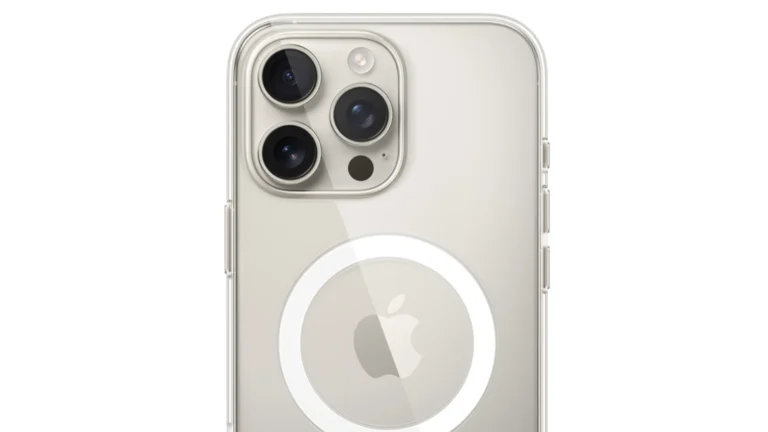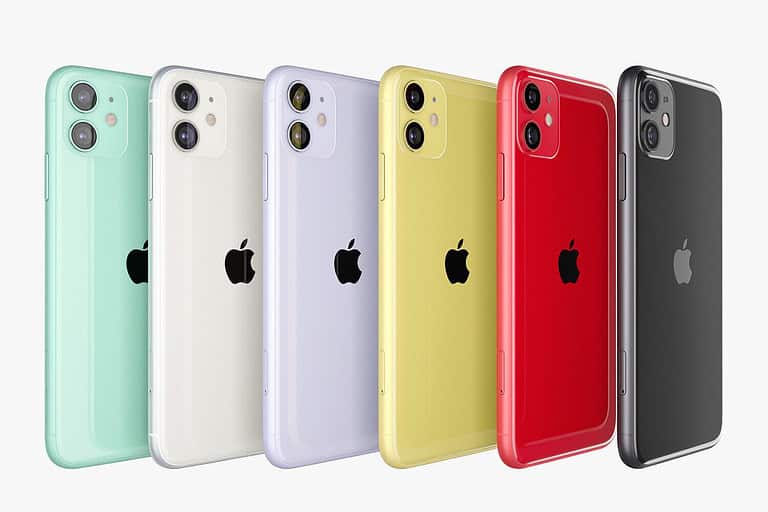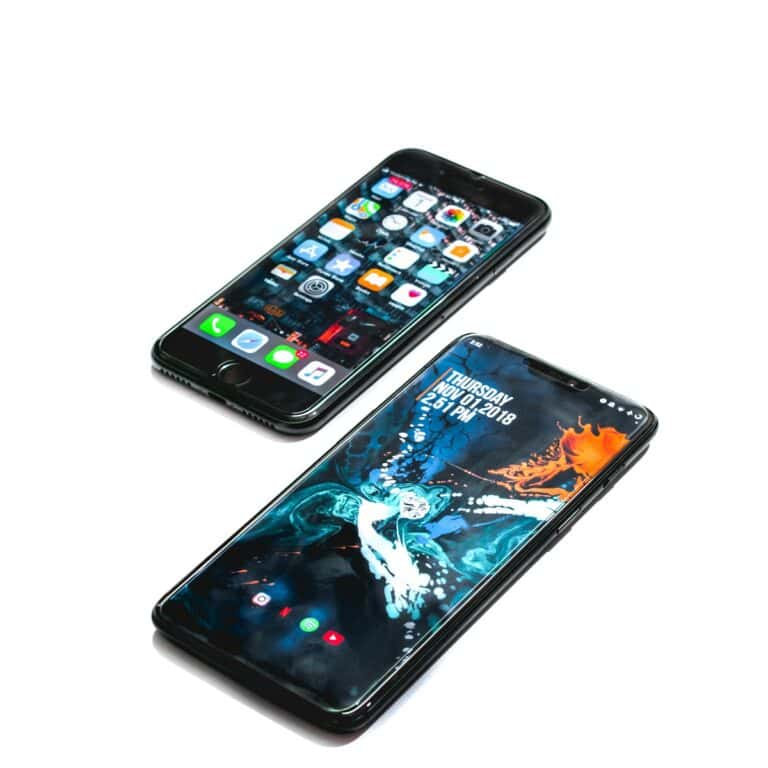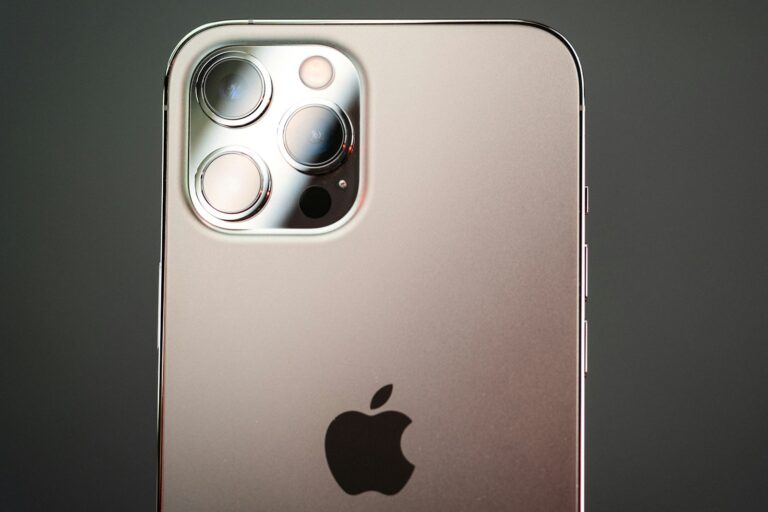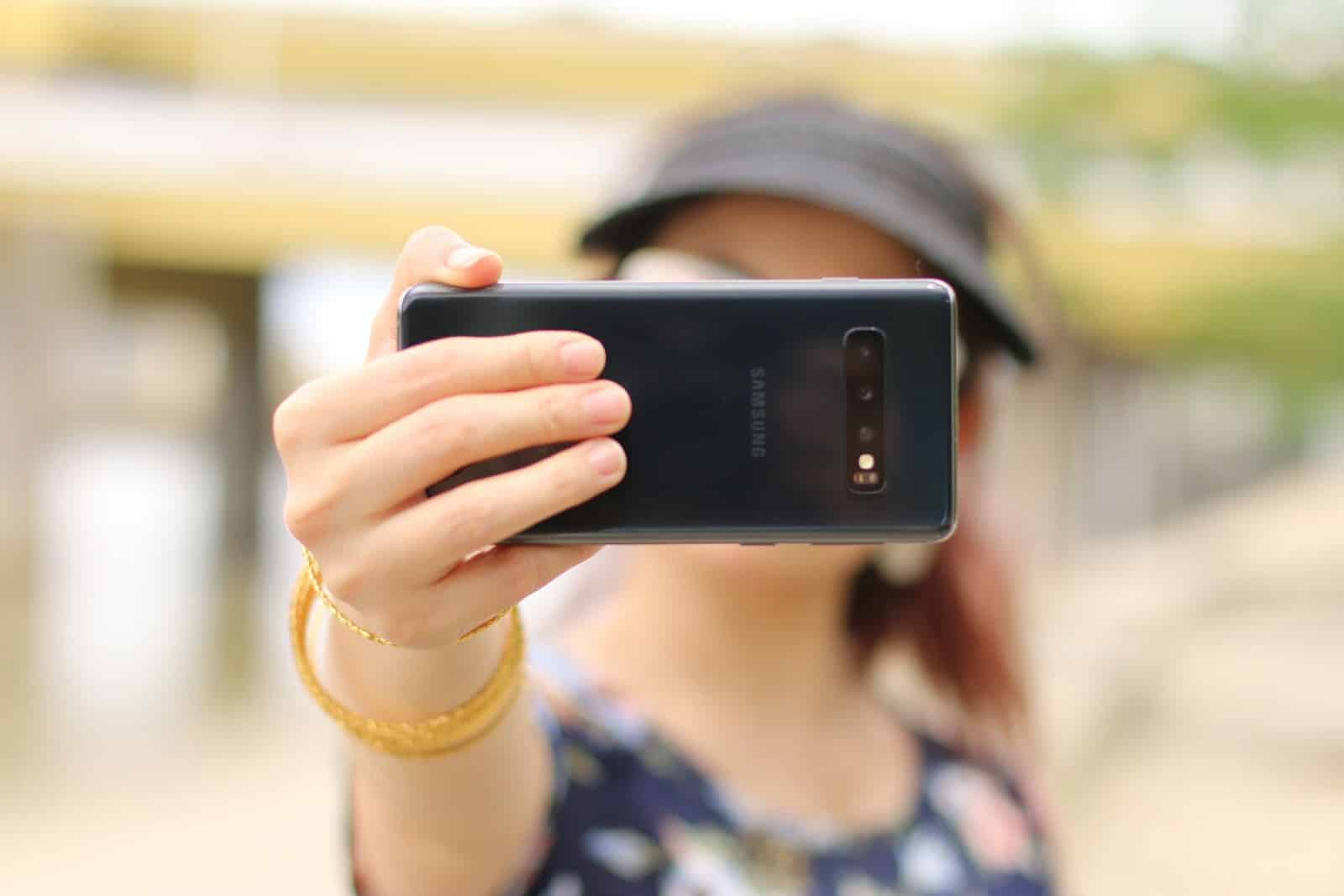
It’s always important to hold your phone properly to get good video or picture quality – whether it’s about maintaining proper angles, balance, or minimizing shaking. It’s recommended that you use both hands and keep your elbows close to your body to keep the footage steady. Hold the phone gently but firmly and ensure the camera lens is clean. For a professional look and wider angle, it’s best to record videos horizontally instead of vertically. This will ensure that your videos are formatted in the same ratio as television and computer screens (widescreen). While the camera app on your smartphone may do a good job the role you play and other apps can take your captures to the next level.
Before you start recording, consider the lighting and surroundings. Good lighting, whether natural or artificial, will make your video look better. Also, check the background for distractions and adjust the focus on your phone. If your phone has built-in stabilization features, use them. You can also use a phone stand or tripod for smooth and steady videos, which can make a big difference in the final video quality.
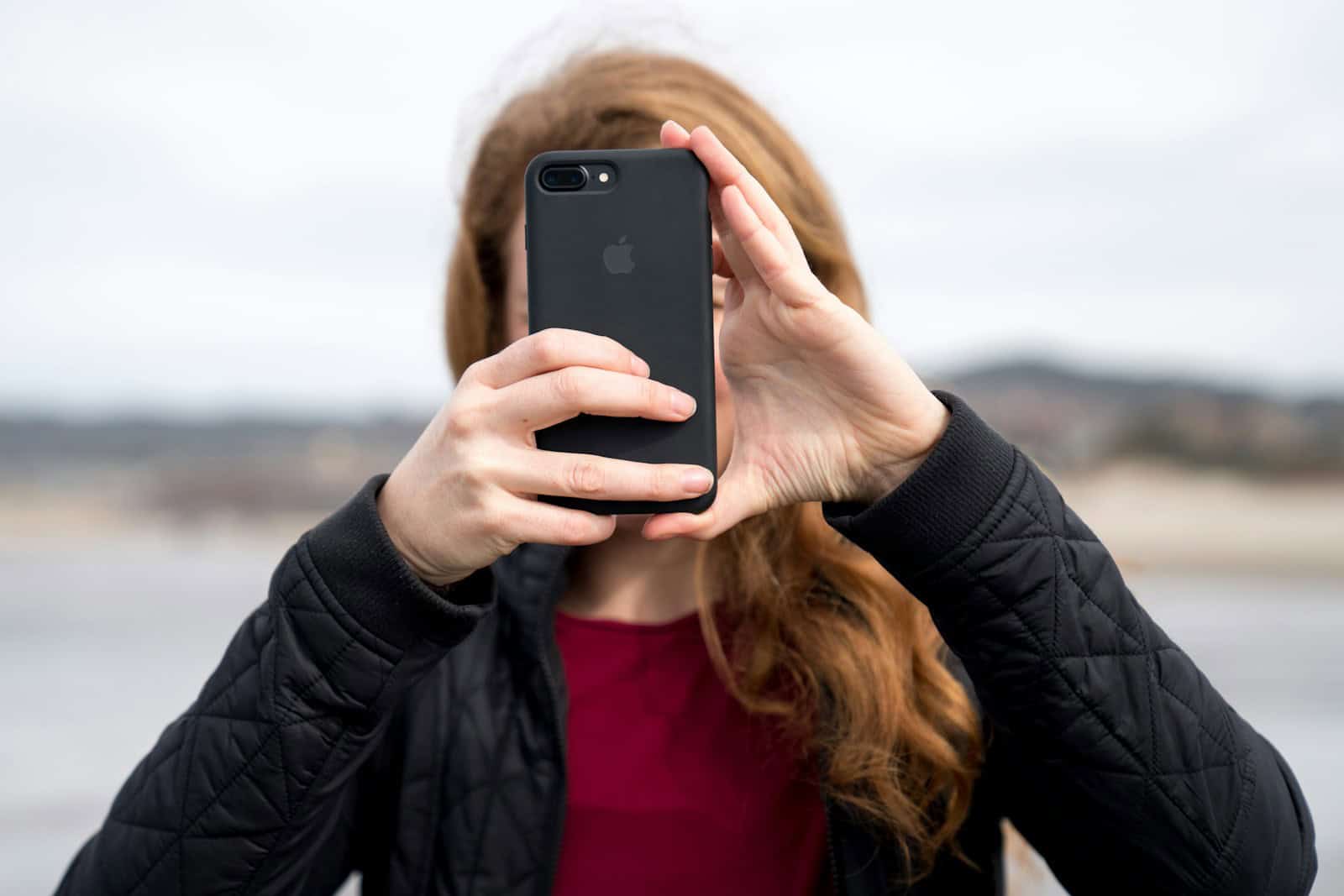
Mastering Mobile Videography: The Art of Holding Your Phone
Getting a steady shot is crucial for creating professional-looking videos with your phone. Let’s explore some techniques and tools that will help you capture smooth and stable footage.
Handheld Techniques
- Two-Handed Grip: Hold your phone with both hands, like a traditional camera. This provides better stability and control, especially when walking or moving.
- Elbows In: Keep your elbows tucked into your body for added support. This helps to minimize shaky movements.
- Use Your Body: Lean against a wall or tree to stabilize yourself and reduce camera shake.
- Practice Smooth Movements: Avoid sudden jerks or rapid movements. Pan and tilt slowly and smoothly to create a polished look.
Essential Gear for Steady Shots
| Gear | Description | Benefits |
|---|---|---|
| Tripod: | Attaches to your phone and provides a stable base for static shots. | Ideal for interviews, vlogs, or time-lapses. |
| Gimbal Stabilizer: | A motorized device that counteracts your movements for buttery smooth footage. | Perfect for action shots, walking videos, or cinematic effects. |
| GorillaPod: | Flexible tripod that can wrap around objects or be used as a handheld grip. | Versatile for various shooting scenarios. |
| Smartphone Rig: | A cage-like mount that provides multiple handles and mounting points for accessories. | Offers greater stability and flexibility for advanced videography. |
Additional Tips
- Use the Volume Buttons as a Shutter: This can help reduce camera shake when pressing the on-screen shutter button.
- Shoot in Landscape Mode: This is the standard format for most videos and will look better on larger screens.
- Clean Your Lens: A dirty lens can result in blurry footage.
- Practice and Experiment: Try different techniques and tools to find what works best for you.
Remember, a steady shot is the foundation of great videography. With practice and the right tools, you can capture professional-looking videos using just your smartphone.
Tips For Holding Your Phone Taking Video
| Technique | Description | Benefits |
|---|---|---|
| Two-Handed Grip | Hold the phone firmly with both hands, one on each side. | Provides maximum stability, reducing shakiness and making your footage look smoother. |
| Landscape Orientation | Position the phone horizontally as you would with a traditional camera. | Captures a wider field of view, more closely matching movie and TV screens, offering a more professional look |
| Elbow Support | When possible, tuck your elbows against your body or rest them on a stable surface. | Adds another point of stability, further minimizing unwanted movement and camera shake. |
| Utilize Accessories | Consider using tripods, gimbals, or phone rigs designed for video shooting | Provides even greater stability, especially for longer shots, and unlocks advanced techniques like panning or smooth zooming |
Additional Tips
- Keep your wrists loose: Avoid a rigid grip, as this can transfer tension to the footage.
- Practice controlled breathing: Holding your breath can introduce subtle shakes.
- Use a grid overlay: Many camera apps have this feature, helping with composition and keeping your shots level.
Top Apps for Recording Video on Cell Phones
| App Name | Platform | Key Features | Best For |
|---|---|---|---|
| Filmic Pro | iOS, Android | Manual controls, high bitrate recording, cinematic effects | Professional-grade video, filmmakers |
| ProMovie | iOS | Manual controls, focus peaking, RAW video recording | Serious iPhone videographers |
| MAVIS – Pro Camera | iOS | Log recording, waveform monitor, false color | Professional video production |
| Open Camera | Android | Manual controls, RAW capture, slow-motion video | Replacing default camera app, no-cost option |
| KineMaster | iOS, Android | Multi-track editing, chroma key, speed control | Video editing and creation |
| Adobe Premiere Rush | iOS, Android | Easy editing, motion graphics templates, audio tools | On-the-go editing, social media content |
| InShot | iOS, Android | Simple editing, filters, music library | Casual video editing, social media sharing |
Please note: This table provides a brief overview of some popular video recording apps. Features and availability may vary depending on your device and operating system. It’s always recommended to read app descriptions and reviews before downloading.
Additionally, many smartphones have excellent built-in camera apps that can produce high-quality videos, especially for casual use. Consider exploring the capabilities of your phone’s native camera app before downloading third-party options.
Key Takeaways
- Proper phone handling is essential for quality video.
- Video setup includes considering light and background.
- Tools like tripods enhance video stability.
Setting Up Your Phone for Video Recording
Setting up your smartphone for video recording involves a few key steps: choosing the right accessories, positioning your device effectively, and adjusting the settings to capture high-quality video.
Choosing the Right Accessories
To achieve a stable shot, a tripod or phone stand is essential. A phone stand with adjustable height and angle options aids in capturing video from various perspectives. You may opt for a compact, lightweight design for easy mobility, or a more robust tripod if you plan to shoot in windy or unstable conditions. For enhanced audio, consider attaching a shotgun microphone, and if you’re shooting in low light, an LED light or ring light can improve visual quality.
- Tripod/Phone Stand: Look for stability, adjustable height, and angle options.
- Microphone: Add a shotgun microphone for higher audio quality.
- Lighting: Use an LED light or ring light to ensure your subject is well-lit.
Positioning for Optimal Composition
The orientation of your phone matters greatly. If you’re recording for professional purposes or to share on platforms that favor wider images, horizontal (landscape) mode is best. For social media stories or live videos that mimic how we naturally hold a phone, vertical (portrait) mode is appropriate. Always ensure your subject is within the frame and experiment with different angles to add visual interest.
- Orientation: Choose landscape for wide shots, portrait for social media.
- Angles: Experiment with various angles for more dynamic videos.
Adjusting Settings for Video Quality
Prior to recording, adjust your phone’s camera settings. Increasing resolution and frame rate can improve clarity and smoothness, especially for moving subjects. Activate optical image stabilization (OIS) to reduce shakiness. If you’re planning to zoom in, check that your phone does so without losing video quality. Some phone stands come with a Bluetooth remote, allowing you to start and stop recording without jostling the camera.
- Resolution and Frame Rate: Set these according to the desired clarity and motion smoothness.
- Stabilization: Enable OIS to minimize shaky footage.
- Zoom: Test out zoom functionality to maintain quality from a distance.
Creating Engaging Video Content
When making videos with your phone, remember that a good video isn’t just about what you capture, but how you capture it. Composition, lighting, and shot stability are key to engaging videos.
Understanding the Basics of Composition
A well-composed video draws viewers in and guides their eyes to important parts of the scene. The rule of thirds is a simple method to follow: imagine your screen is divided into nine equal segments by two vertical and two horizontal lines. Position the main elements of your scene along these lines or at their intersections. This technique works for both horizontal video suited for YouTube, television, and vertical video favored by social media platforms like Instagram, Snapchat, and Facebook.
Experiment with different forms, lines, and textures to create depth and interest. For instance, lines can lead the viewer’s eyes in a certain direction, while contrasting textures bring a scene to life.
Capturing Stable and Clear Shots
A shaky video can be hard to watch. To ensure your shots are stable and clear:
- Hold your smartphone firmly with both hands or use a tripod or stabilizer.
- When moving, use slow and smooth motions to maintain shot quality.
- Plan your sequence of shots in advance, especially if you’re filming a vlog; this will make the editing process smoother.
Clear videos keep viewers focused on your content, not the distractions of a wobbly scene.
Utilizing Lighting and Color Effectively
Good lighting is crucial and natural light is often the best choice for phone videos. Position yourself or your subject so that the light is facing you, not behind you, to avoid shadows and silhouettes.
- Brightness and contrast should enhance the scene without overwhelming it.
- Be aware of the colors you use; they can affect the mood of your video and should complement your subject.
For online meetings on Zoom or Google Meet, ensure the light source is in front of you, creating a clear and professional appearance on your laptop.
Frequently Asked Questions
Understanding the proper techniques to hold your phone for video recording can significantly improve the quality of your footage. Here, we address some common inquiries with clear and helpful guidance.
What is the best way to grip an iPhone while recording a video?
For improved stability, use both hands to hold your iPhone on its sides when recording a video. It’s ideal to film in landscape mode, which means turning your phone horizontally. This position captures a wider field of view, which is more natural for viewing on most screens.
Can you provide tips for stabilizing video recording on an Android phone?
Hold your Android phone firmly with both hands, spreading your fingers for extra support. Keep your arms close to your body to minimize shaking. Use your phone’s built-in stabilizing features if available, and practice smooth movements for better video quality.
What techniques work well for shooting a video with a phone for YouTube?
When creating YouTube videos with your phone, always shoot in landscape mode to match the aspect ratio commonly used on the platform. Hold your phone with both hands, and if possible, lean against a stable object or stand to keep the camera steady. Good lighting and clear audio are also important, so consider the environment you’re filming in.
How can I record quality video footage of myself using a phone?
If you’re recording yourself, position your phone at eye level to create a natural angle that viewers can relate to. Use a tripod or set your phone on a stable surface. Make sure your face is well-lit, and avoid backlighting that can overshadow your features.
What are effective methods for filming a music video on a mobile device?
To film a music video on your phone, plan your shots and movements ahead of time. Use landscape mode for filming and try different angles to add visual interest. Consider using a gimbal or steadicam for smooth motion, and pay attention to syncing the movements with the music’s rhythm.
Is there a way to shoot stable phone videos without using a tripod?
Yes, you can shoot stable videos without a tripod by resting your elbows on a flat surface or using your body as a brace. You can also take short clips and edit them together to avoid long, shaky shots. Some smartphones have optical image stabilization, which can help minimize camera shake.


